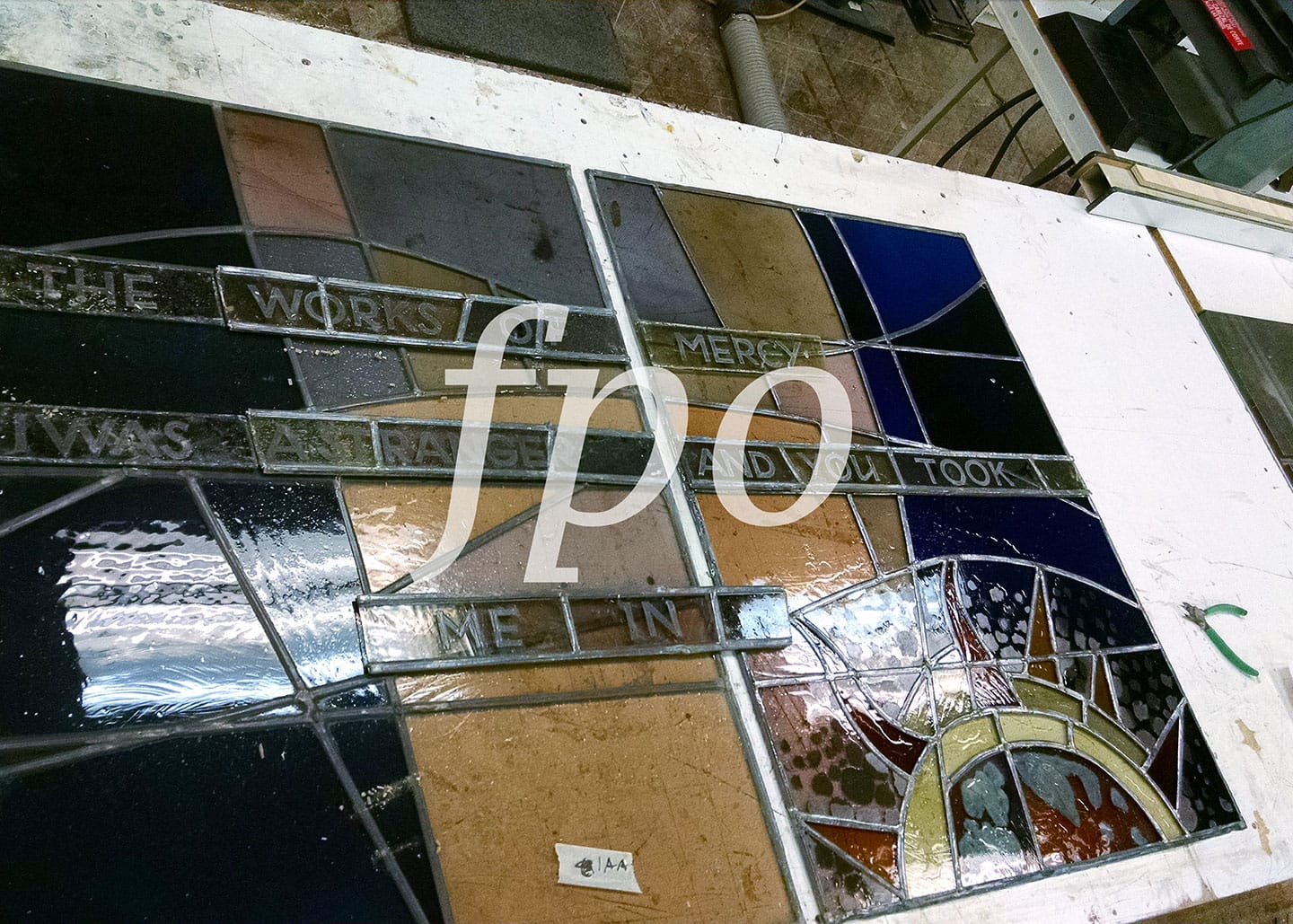Often installed on the exterior covering the stained glass is protective glazing. These glazing systems can offer significant protection against vandalism and severe weather conditions such as hail, falling ice or flying projectiles enabled by wind. Studies have indicated only minute savings regarding energy conservation while the return on the investment may take more than 20 years.
Traditional stained glass can actually benefit from exposure to the elements. Rain will wash the windows at no cost. Rain can also react with traditional leadlight cement and contribute to self repair of small voids in the panels. Without protective glazing covering the glass, it is much easier to view the windows from the exterior adding another architectural detail to the building appearance that can be enjoyed by everyone. The glazing will also serve as an obstacle when attempting to visually inspect the windows or perform routine maintenance. If the property stewards are concerned about damage, there are systems that can satisfy both needs.
The most common mistake when installing a protective glazing system is the absence of ventilation. Heat generated between the layers of protective glass and stained glass can reach extreme levels. This heat exposure can prematurely fatigue building materials trapped inside. It is recommended there be adequate ventilation located at the top and bottom of the system to encourage air movement between the layers. These vents should be fitted with screens to prevent insect infiltration.
Glazing systems should be self contained within their own framework rather than screwed directly to the existing frame. When creating a system it is also important to consider the design of the windows so that any structural frame members of the protective be located similar to those of the stained glass as not to detract from the interior appearance.
Uncommon in our country, large metal screens also offer adequate protection from physical impact. These systems offer good protection without the worries of excessive heat buildup. This method also allows the stained glass to be viewed from the exterior as well as appearing almost invisible from the interior.
Every building and glass installation is different. If you decide you would like added protection over your stained glass, we can help design a system that works best for your individual needs.
For more information about protective glazing, download this about the virtues and liabilities of glazing over stained glass which will describe energy, security, sound and light transmission as well as many other issues.
